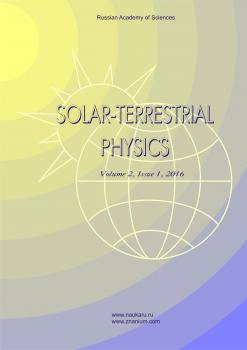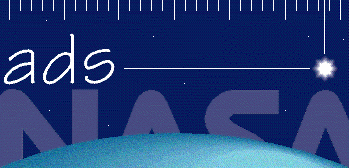Иркутск, Россия
Иркутск, Россия
Иркутский государственный университет
Иркутск, Россия
Ground-based observations within meter radio range are of importance for understanding processes occurring in the solar corona. We present concepts, block diagram, and results of first observations of the Solar Spectropolarimeter of Meter Range (SSMD), launched for solar observations in the range 50–500 MHz in April 2016. The main purpose of this work was to develop an up-to-date digital radio spectropolarimeter able to record the full Stokes vector for sporadic solar phenomena taking place in the 50–500 MHz range. We use a crossed log periodic antenna to detect solar radio emission. This antenna can simultaneously obtain horizontal and vertical polarization components. The main part of SSMD is a digital receiver based on an FX correlator architecture. We use the Fast Fourier Transform (FFT) algorithm based on the real-time pipeline circuit to construct amplitude dynamic spectra (intensity vs frequency and time). SSMD has 4608 frequency channels with 97.66 kHz channel bandwidth and 97.66 kHz spacing. Time resolution is 1 s. The spectropolarimeter has a 50–500 MHz range. It can record the full Stokes vector. At present, SSMD observes two of four parameters in regular mode (I and V). We have observational data since 2016. The catalog development is in progress. We plan to improve time and frequency characteristics, record all Stokes parameters, and conduct a calibration. We are working on providing access to the data archive via the Internet.
radio spectrometer, Fast Fourier Transform spectrometer, FX correlator, instruments, Sun, polarization, Stokes parameters, meter wavelengths
1. Akabane K., Cohen M.H. Polarization measurements of type III bursts and Faraday rotation in the corona. Solar Phys. 1961, vol. 133, pp. 258-268
2. Baskakov S.I. Radiotekhnicheskie tsepi i signaly [Radio circuits and signals]. Moscow, Vysshaya Shkola Publ., 2003. 462 p. (In Russian).
3. Benz A.O., Monstein C., Meyer H., Manoharan P.K., Ramesh R., Altyntsev A., et al. A world-wide net of solar radio spectrometers: e-CALLISTO. Earth, Moon, and Planets. 2009, vol. 104, iss. 1-4, pp. 277-285.https://doi.org/10.1007/s11038-008-9267-6.
4. Born M., Wolf E. Principles of Optics. London: Pergamon Press, 1965, 808 p.
5. Chin Y.C., Lusignan B.B., Fung P.C.W. Polarization measurements of solar type III radio bursts at 25.3 MHz. Solar Phys. 1971, vol. 16, iss. 1, pp. 135-151.https://doi.org/10.1007/BF00154509.
6. Hartley R. Modulation System. US patent, no. 1666206, 1928.
7. Iwai K., Tsuchiya F., Morioka A., Misawa H. IPRT/AMATERAS: A new metric spectrum observation system for solar radio bursts. Solar Phys. 2012, vol. 277, iss. 2, pp. 447-457.https://doi.org/10.1007/s11207-011-9919-y.
8. Kondo T., Isobe T., Igi S., Watari S., Tokimura M. The Hiraiso Radio Spectrograph (HiRAS) for monitoring solar radio bursts. J. Communications Research Laboratory. 1995, vol. 42, no. 1, pp. 111-119.
9. Kundu M. R. Solar Radio Astronomy. N.Y.: Interscience Publ., 1965. 660 p.
10. McLean D.J., Labrum N.R. Solar Radiophysics: Studies of Emission from the Sun at Metre Wavelengths. N.Y.: Cambridge University Press, 1985, 516 p.
11. Prestage N.P., Luckhurst R.G., Paterson B.R., Bevins, C.S., Yuile, C.G. A new radiospectrograph at Culgoora. Solar Phys. 1994, vol.150, pp. 393-396. DOI:https://doi.org/10.1007/BF00712901.
12. Rabiner L.R., Gold B. Theory and Application of Digital Signal Processing. New Jersey: Englewood Cliffs, Prentice-Hall, Inc. Publ, 1975, 777 p.
13. Romney J.D. Cross-correlators. synthesis imaging in radio astronomy II. A collection of lectures from the Sixth NRAO/NMIMT Synthesis Imaging Summer School. ASP Conf. Ser. Socorro, New Mexico, USA, 1999, vol. 180, pp. 57-78.
14. Tsvetkov Ts., Miteva R., Petrov N. On the relationship between filaments and solar energetic particles. J. Atmos. Solar-Terr. Phys. 2018, vol. 179, pp. 1-10. DOI:https://doi.org/10.1016/j.jastp. 2018.06.005.
15. Wild J.P., Smerd S.F., Weiss A.A. Solar Bursts. Annual Review of Astronomy and Astrophysics. 1963, vol. 1, no. 1, pp. 291-366. DOI:https://doi.org/10.1146/annurev.aa.01.090163.001451.
16. Wilson T.L., Rohlfs K., Hüttemeister S. Tools of Radio Astronomy. Berlin: Springer-Verlag Publ. 2009, 520 p.
17. Zheleznyakov V.V. Radio Emission of the Sun and Planets. Oxford, Pergamon Press, 1970, 712 p. (ed.: J.S. Hey).
18. URL: https://www.analog.com/en/index.html (accessed 30 July 2019).
19. URL: https://www.intel.com (accessed 30 July 2019).
20. URL: https://www.sws.bom.gov.au/Solar/3/1 (accessed 30 July 2019).
21. URL: http://www.cd-corp.com/eng/cma/clp5130.pdf (accessed 30 July 2019).
22. URL: http://www.izmiran.ru/stp/lars/?LANG=ru (accessed 30 July 2019).
23. URL: https://www.qt.io (accessed 30 July 2019).


















